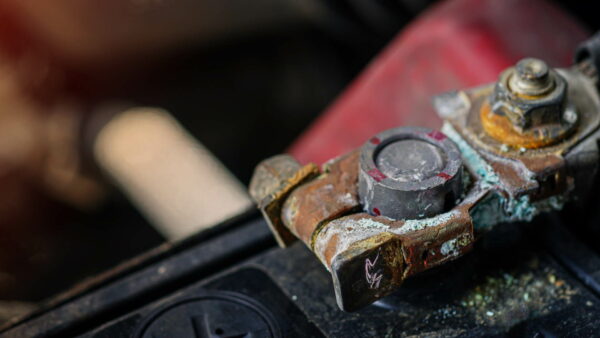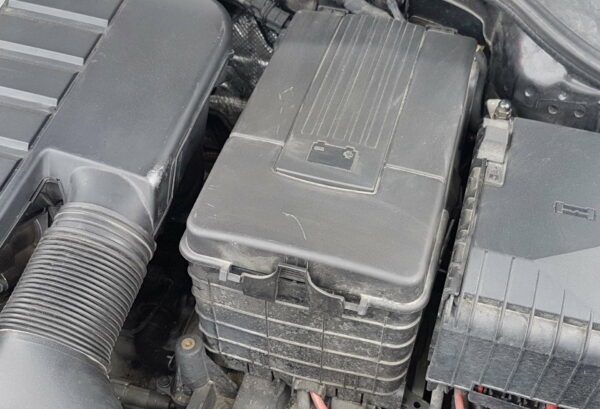Does a flat battery in your car damage the battery life?
You should get between 4-6 years’ life from your car battery if you treat it right. Until fairly recently, batteries had to be maintained by topping them up with water, but most batteries in cars are now maintenance-free, but this doesn’t mean that you don’t need to look after them.
Car batteries like to be kept charged. Deep cycling – letting them run out then charging them again – reduces their life; you can’t treat them like a cellphone battery.
Looking after them means:
- Keeping them clean
- Minimising parasitic drain
- Keeping them charged
Corrosion can build up around the terminals of the battery.

Clean this off and keep the top of the battery free of dirt. Any dirt and water sitting on the top of the battery can actually allow charge to flow across the terminals, reducing the life of the battery.

Keeping your battery charged means being aware of parasitic drain and also the impact of many short journeys.
Parasitic drain is caused by the power used for the clock, your alarm and any auxiliary equipment you might have left in the car, like a phone charger. Worse is if you accidentally leave the inside or outside lights on while the car isn’t moving. While your car will be OK for a few weeks with the small amount of drain from the clock, long periods of sitting idle are not good for the battery.
The battery is charged when the engine is running. The alternator diverts power to the battery, but the amount depends on how the car is being used. If it’s sitting idling, not much power is supplied – this is why you can’t simply idle your car for 10 minutes and expect it to charge the battery.
Batteries also charge at different rates depending on the temperature. Cold weather will slow the charge rate.
When you start the car, you crank the engine for around 3 seconds. This uses some power from the battery and, all things being equal, this should be replaced with around 2 minutes of driving. But, if you are using the seat heater, air conditioning, headlights, radio, GPS and phone charger at the same time, it will take longer.
How much electrical power does your car consume?
- Air conditioning: 500 watts
- Seat heaters: up to 200W
- Opening a sunroof: 200W
- Power windows: 150W per window
- Central locking: 150W
- Cigarette lighter socket: 50W+
- Radiator fan: 800W
- Heated rear window: approx 120W
- Windscreen wipers: 80-150W, depending on the speed
- LED headlights: 40-60W low beam to high beam
- Halogen headlights: high beam around 130W for 2, low beam around 110W for 2, so when in high beam, a total of 240W
This means that if you do lots of short journeys of just a few minutes, you might not be driving the car enough to keep the battery charged.
How do you know if your battery is failing?
Signs that your car battery is failing include:
- Slow cranking – when you start the car, the engine turns slowly and struggles to start
- Illuminated battery light – the battery light on the dashboard comes on if the alternator isn’t charging the battery. This means that even if you are driving the car, the battery is not being charged. While you could continue driving until the fuel runs out, you might not be able to start it again once stopped. Using the headlights, radio or other items that require power will run the battery out quicker.
If you won’t be using your car for a while, you can use a trickle charger which keeps the battery topped up. People with classic cars that only get used in summer will have a trickle charger.

